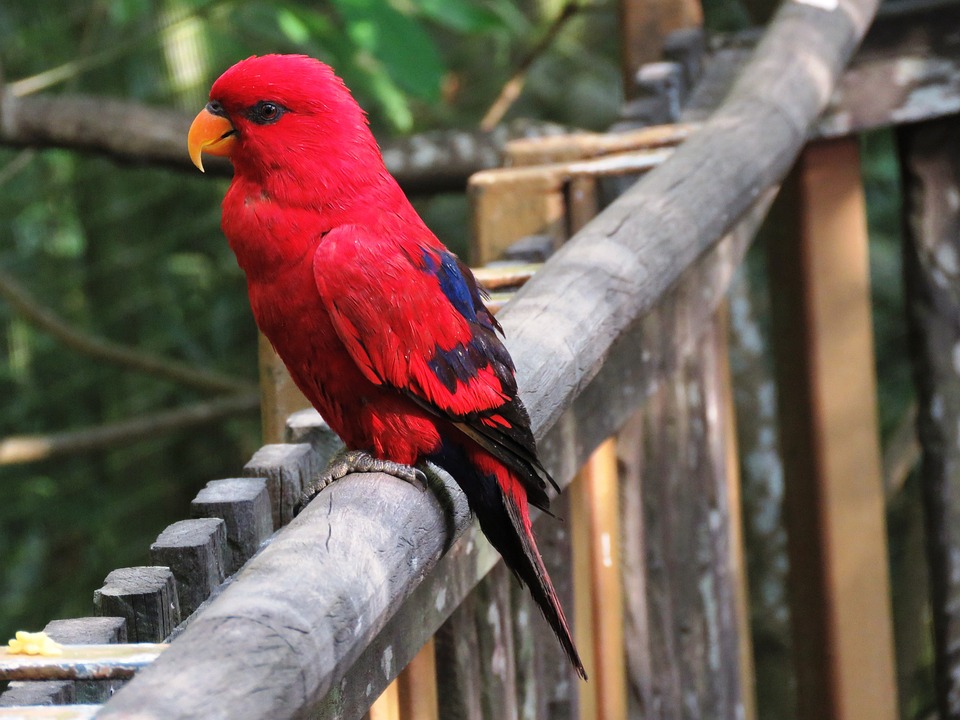Training props are an essential part of parrot enrichment and training. They provide mental stimulation, promote physical activity, and strengthen the bond between parrot and owner. In this article, we will explore effective techniques to encourage parrots to interact with training props, and address frequently asked questions to help you navigate this exciting training journey.
Firstly, it is important to understand the importance of training props in parrot enrichment. Training props provide a variety of activities that help parrots engage their minds and bodies. They contribute to parrot training and behavior modification by providing opportunities for positive reinforcement and teaching them new skills. Furthermore, training props promote cognitive development by challenging the parrot’s problem-solving abilities and keeping them mentally stimulated.
When introducing training props to your parrot, it is important to do so gradually. Start by placing the props near their cage or in their play area, allowing them to observe and get comfortable with the new objects. Use treats and rewards during the prop introduction to create a positive association. This will help the parrot associate the props with something enjoyable and increase their interest in interacting with them.
Choosing the right training props is crucial for a successful training experience. Assess your parrot’s preferences and select props that align with their interests. Ensure that the props are made of non-toxic, bird-safe materials to prioritize their safety. Consider the size and complexity of the props, matching them to the parrot’s skill level and physical abilities. It is also important to introduce new props periodically to keep the activities fresh and engaging.
To encourage initial interaction with the props, position them within the parrot’s reach and line of sight. Use treats as bait to pique their curiosity and demonstrate how to engage with the prop. This will encourage mimicry and increase their interest in interacting with the props. Remember to be patient and provide positive reinforcement even for small interactions. This will motivate the parrot to continue engaging with the props.
Stimulating prop engagement can be achieved by incorporating props into training sessions and playtime. Make the props a focal point during targeted training exercises and use them to encourage active and playful interaction. Food puzzles and foraging props are also great for promoting mental stimulation and natural foraging instincts. Additionally, regularly introducing new props will maintain excitement and prevent boredom.
Now, let’s address some frequently asked questions about training props for parrots:
1. Are there any specific training props suitable for parrots of all sizes?
– There are training props available for parrots of all sizes. It is important to choose props that are appropriate for your parrot’s size and physical abilities.
2. Can I use homemade training props, or are commercial ones better?
– Homemade training props can be just as effective as commercial ones. The key is to ensure that they are made from safe, non-toxic materials and provide the desired stimulation for your parrot.
3. How often should I rotate training props?
– It is recommended to rotate training props regularly to keep the activities fresh and engaging. This can be done every few weeks or whenever you notice a decline in your parrot’s interest.
4. My parrot seems disinterested in certain props. Any suggestions?
– If your parrot is disinterested in certain props, try selecting props that align with their preferences and interests. You can also try incorporating treats or rewards to increase their motivation to interact with the props.
5. Are there any safety concerns when using training props?
– Safety should always be a priority when using training props. Ensure that the props are made of non-toxic materials and do not have any small parts that could be ingested. Regularly inspect the props for wear and tear, and replace them if necessary.
6. Can training props help with behavior issues like feather plucking or screaming?
– Training props can be used as part of a comprehensive behavior modification plan to address issues like feather plucking or screaming. Consult with an avian behaviorist or trainer for specific guidance and techniques.
In conclusion, encouraging parrots to interact with training props is a great way to provide mental stimulation, promote physical activity, and strengthen the bond between parrot and owner. By gradually introducing, selecting appropriate props, and employing positive reinforcement techniques, you can engage your parrot in exciting training sessions. Remember to prioritize safety and address any specific concerns or behavioral issues through proper prop selection and training methods. With patience and perseverance, you and your parrot will embark on an enriching training journey together.









